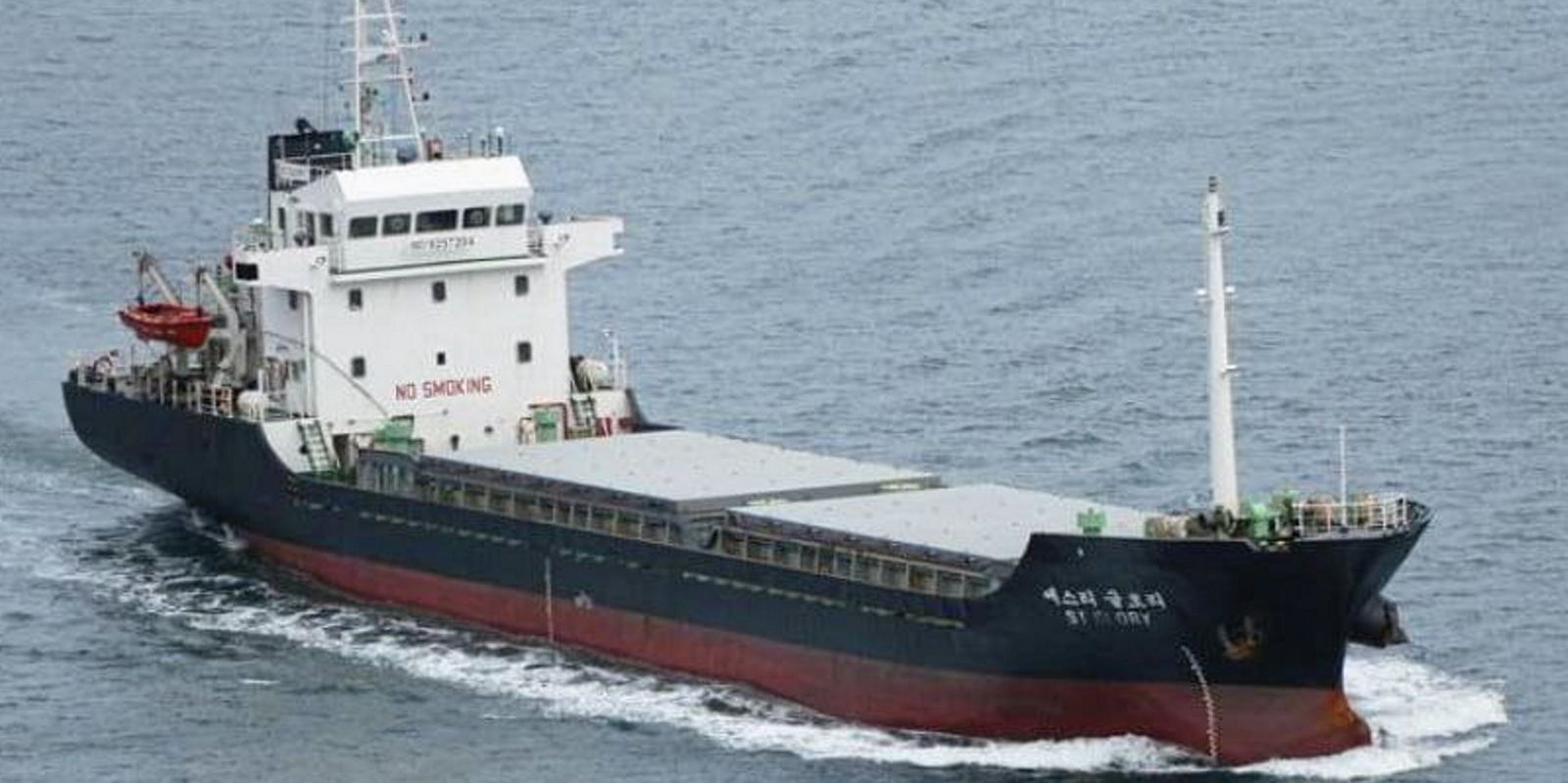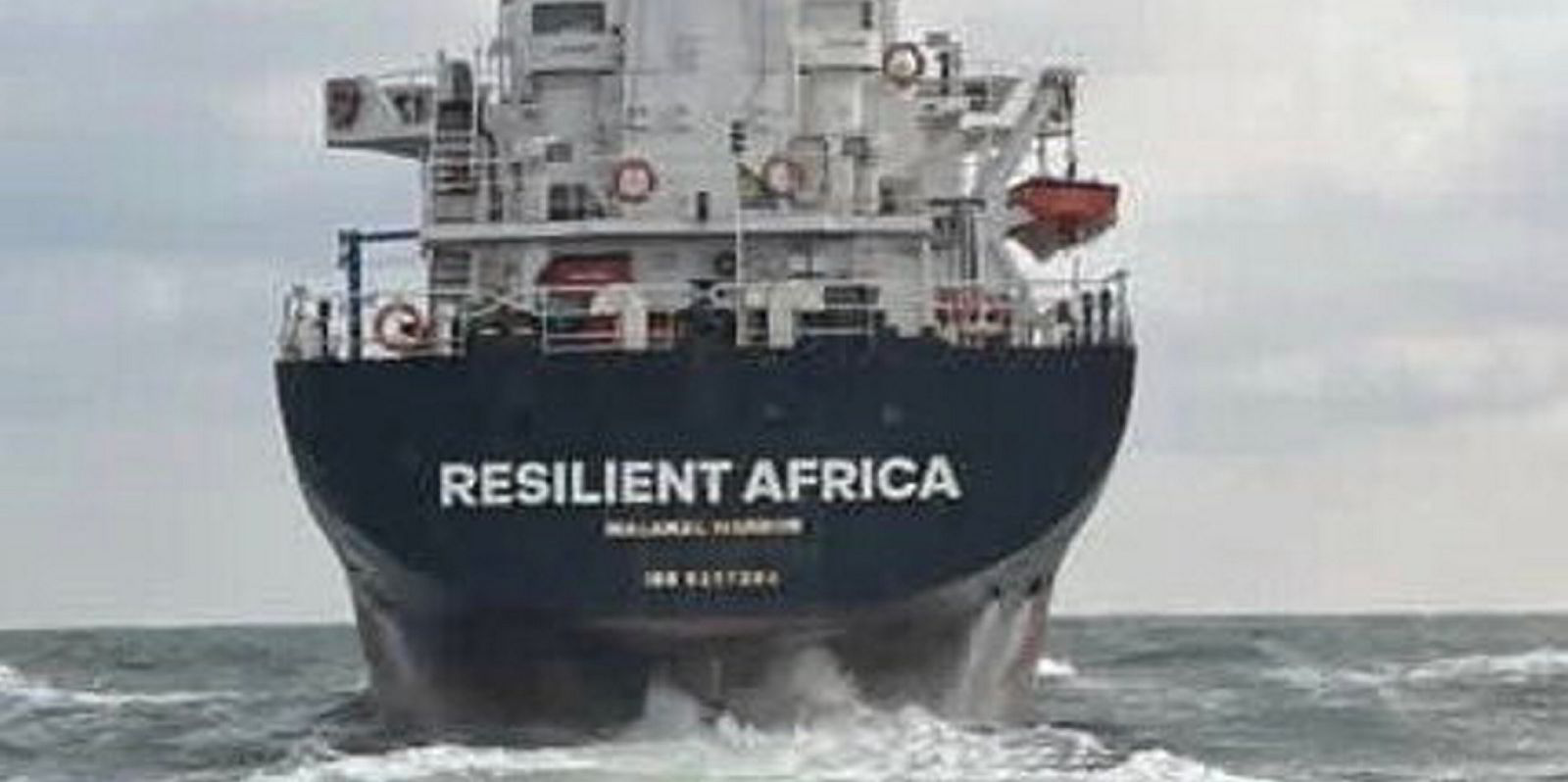A small vessel that defied a Russian blockade of Ukraine’s blocked deep-sea ports at the weekend began its return journey on Tuesday.
Vessel trackers and sources confirmed that the 3,300-dwt Resilient Africa (built 2001) had left the port of Chornomorsk. Ukrainian officials said it had 3,000 tonnes of wheat on board and was heading south towards the Bosphorus.
A MarineTraffic entry suggests it could be heading towards Israel.
The Resilient Africa and 18,300-dwt Aroyat (built 1997) were the first two vessels to have sailed to a big Ukrainian port since July, when Russia pulled the plug on a United Nations-guaranteed grain corridor and said it would consider all ships in these waters potential military targets.
Aroyat is still in Chornomorsk, loaded with wheat for Egypt, Ukrainian infrastructure minister Oleksandr Kubrakov tweeted.
Kubrakov had said on Saturday that the two vessels would carry grains to Asia and Africa.
A successful completion of their round trip would be a boost for Ukraine, which seeks to establish its own maritime corridor without having to depend on Moscow’s acquiescence.
Shipping data platforms show both vessels under Turkish management — Aroyat with Kiva Marine and Resilient Africa, previously known as Dafne H, with HDR Denizcilik.
They are flying the flag of Palau and their crews are from Turkey, Azerbaijan, Egypt and Ukraine.
Kyiv has already used its new corridor since August to get five trapped vessels out — one container ship and four bulkers, as TradeWinds already reported.
Aroyat and Resilient Africa are understood to have no commercial marine insurance cover. Their eventual success in getting grain out, however, might encourage insurers to arrange cover, and shipowners to send fresh ships into the corridor.
TradeWinds reported in August that insurance broker Marsh was involved in talks to arrange war risk cover for Ukrainian grain exports along a missile-protected sea corridor.
Insurance sources in the London market told TradeWinds then that the deal, discussed with Marsh consultancy Oliver Wyman, was hinging on a risk-sharing agreement between the Ukrainian government and the private insurance industry.
The war risk cover would be for a critical 10 hours’ sailing from the Romanian border at the Danube up to Ukraine’s deep-sea ports, the waiting and loading period, and then the return journey. Underwriters’ exposure could be limited by fast turnaround and limiting the number of ships in the high-risk area at any one time.
Since the end of the UN’s Black Sea Grain Initiative, military operations in the Black Sea have escalated.
As a result of mutual missile and drone attacks, the balance of power in the northwest part of the Black Sea, through which the Ukrainian corridor passes, has shifted somewhat in Kyiv’s favour.
According to Russian bloggers, two Ukrainian Navy gunboats and MiG-29 fighter aircraft were protecting the 35,000-dwt Puma (built 2017) as it left Odesa on Friday.
The Blumenthal Asia-managed ship is one of the five trapped vessels that left Ukraine since August and the first one to carry foodstuffs — a load of rapeseed.
Russia has expressed concerns that inbound ships might be used to carry weapons to Ukraine. It has already subjected some vessels heading towards Ukraine’s ports along the Danube to inspections.





